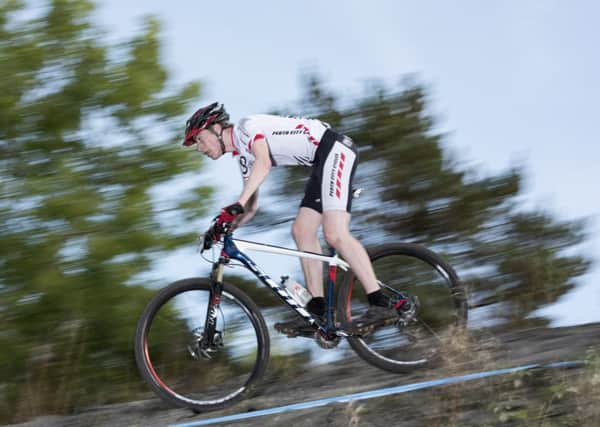Highlands on the right track with cycle use


And with a new university just opened in Inverness, that is set to increase substantially and boost the cities bragging rights when it comes to cycling.
For the Highland capital currently leads the way among the Scottish cities in using bikes for commuting – with 5.6 per cent of people cycling to work, the highest level in the country.
Advertisement
Hide AdAdvertisement
Hide AdAcross the Highlands as a whole, the level of people using cycling as their main mode of transport is 1.9 per cent, higher than the Scottish average of 1.1%, according to the latest statistics in the Scottish Government’s Scottish Household Survey.
It is suggested one of the main reasons is that the region is considered a safer place to cycle, particularly in rural areas where there are less vehicles.
Meanwhile, an indicator of the high level of cycle use in Inverness alone is a new route installed in July.
Since then, over 64,000 cyclists have passed a Danish style Cycle Counter on the city’s Millburn Road – more than the population of the city.
It is now being used by hundreds of students as the route links Inverness city centre with the new University of the Highlands and Islands (UHI) Campus at Beechwood, which was officially opened by the Princess Royal last month.
Fiona McInally, active travel officer from Highlands and Islands Transport Partnership (HITRANS), who led the project, said: “The fantastic numbers of cyclists using Millburn Road show what can be achieved when good infrastructure is built where people want to travel.
“We’ve already seen large increases in daily numbers as Inverness College UHI opened this summer and we look forward to seeing how the new walking and cycling links in Inverness Campus affect cycle figures as the team at HIE complete the active travel link towards the retail and business park.
“All increases in cycling help Inverness and the Highlands move towards the Scottish Government aspiration of 10 per cent of everyday journeys by bike by 2020.”
Advertisement
Hide AdAdvertisement
Hide AdProvost of Inverness Councillor Helen Carmichael said: “The route provides a dedicated, healthy and low carbon way of travelling.
“I am encouraged to see a high uptake of cycling in the city and we are committed to working with our partners to develop similar routes in suitable areas.”
Stuart Black, Highland Council’s director of development and infrastructure, added: “Given the significant investment in cycling infrastructure in the area, the counter gives us a valuable and accurate indication of localised traffic flow.”
Work on the route included alterations to the carriageway to create pavements that could be used by both cyclists and pedestrians, new road markings, upgrading of crossings, providing Toucan Crossings at two locations on Millburn Road and new LED street lighting.
The counter was installed by Sustrans Scotland as part a pilot scheme involving eight other locations across the country.
The project received grant funding from the Scottish Government, following a successful application from the HITRANS.
The latest statistics regarding cycling in Scotland show that cycling makes up a relatively small proportion of the journeys that we make.
According to the Sustrans Hands Up Survey, 2.9 per cent of children in Scotland normally cycled to school.
Advertisement
Hide AdAdvertisement
Hide AdIn 2012, adults living in Scotland made around 12 million visits to the outdoors where cycling or mountain biking was the main activity.
The average distance of a bike journey was 4.8km, with over 90 per cent of the journeys being less than 12km.
This compares with an average journey distance by all modes of transport of 8.3km.
A total of 35 per cent of households had access to at least one bicycle in 2012, an increase of three per cent since 1999.
On average people make nine trips per year by bicycle, travelling on average 35 miles per person per year.
Three per cent of men in employment cycle to work compared to 1 per cent of woman in employment.
In 2012, a total of 901 cyclists were injured in accidents reported to police, and this included nine fatalities.
Generally, those households within rural areas are more likely to say children would be very safe or fairly safe when walking or cycling to play areas on their own, ranging from around three-fifths for most play areas in urban areas to around four-fifths in rural areas.